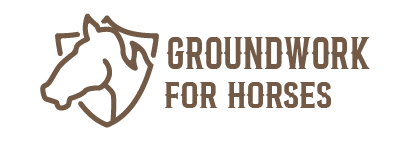Introduction: The Importance of Groundwork in Equine Training
Groundwork is a cornerstone of equine training, providing vital benefits in building effective communication and strong relationships between horse and handler. For beginners and intermediate horse owners, mastering groundwork is an essential skill that not only enhances basic handling abilities but also fosters mutual trust and respect. These exercises can address common challenges such as crowding, leading, and behavioral issues like spookiness or disrespect. Groundwork’s focus on safety and effective communication helps train horses to respond to cues and body language, forming a foundation for all other training and riding activities.
Source: Equus Magazine
Understanding Horse Anatomy and Muscle Function
A fundamental understanding of horse anatomy and muscle function is crucial for effective handling and training, making it important particularly for beginner to intermediate horse owners. Muscles are essential not just for movement, but also for maintaining posture and balance, which is key in reducing anxiety and developing trust. Technologies are being developed to understand horse movement better and interpret behavior through anatomy and biomechanics, which demonstrate the value of such insights in dramatically improving training techniques and outcomes.
Source: Earth.com
Safety First: Preparing for Groundwork Sessions
Safety is paramount during groundwork sessions, especially for novice handlers. Establishing a strong bond and communication with your horse starts with understanding their body language. Horses communicate largely through non-verbal cues, and recognizing these signals is key to preventing accidents and miscommunications. A foundational approach involves pressure and release techniques, reinforcing positive behavior and assembling trust between horse and handler.
Source: Lancaster Farming
Building Trust: Establishing a Positive Relationship with Your Horse
Trust is reinforced by understanding the significance of body language. Horses are highly attuned to body signals, capable of interpreting movements and emotions even before physical contact occurs. Incorporating techniques such as pressure and release can teach horses to respond appropriately, ultimately fostering trust and compliance. Studies show that proper rein tension can significantly influence how a horse behaves.
Source: Equus Magazine
Foundation Exercises for Muscle Development
Foundation exercises are not only valuable for building muscle but also for establishing a positive relationship with horses. Exercises like backing up teach horses to respond to light pressures and respect personal space, while leading and lunging exercises aid in muscle conditioning. Strategies like hill work and transitions (e.g., walk-trot, trot-canter) build muscle in the topline, promoting balance and strength.
Source: Earth.com
Addressing Common Behavioral Challenges through Groundwork
Groundwork is pivotal for addressing behavioral challenges by fostering a bond grounded in mutual respect and understanding. Basic exercises such as leading teach respect for personal space and willingness to follow cues. Desensitization exercises, along with observing natural herd dynamics, play a role in reducing spookiness and anxiety, building confidence in both horse and handler.
Source: Self
Advanced Groundwork Techniques for Conditioning
Advanced techniques involve a detailed understanding of body language and pressure-release methods to improve trust and communication. By starting with body language observation, handlers learn to respond accurately to the horse’s cues. Pressure-release methods reinforce behavior and help manage common issues like spookiness. Training with patience and empathy ensures that horses remain relaxed and engaged.
Source: Earth.com
Celebrating Progress: Tracking Your Horse’s Development
Tracking progress is invaluable for building trust and confidence in both horse and handler. Regular groundwork improves manners and builds both physical and psychological resilience. Exercises such as leading and lunging help in developing muscle and maintaining physical condition, while also reinforcing safety and proper behavior that reduces risks associated with horseback riding (visit this guide for more info on effective groundwork.).
Source: Men’s Health
Conclusion: The Journey of Groundwork in Equine Partnership
Groundwork offers a foundational framework for forming a harmonious partnership between horse and handler. By understanding body language and effective communication, handlers can address common issues such as spookiness and disrespect, leading to safer riding experiences. Gradually integrating structured exercises boosts responsiveness and fosters a strong rapport between horse and handler, paved by successive small victories
Source: Earth.com
F.A.Q.: Your Groundwork Questions Answered
Groundwork exercises, including leading and backing up, are essential for laying a safe and respectful foundation between horses and handlers. Using pressure and release techniques, handlers can reinforce good manners and improve responsiveness. Addressing behavioral problems like spookiness through groundwork reduces stress and alleviates anxiety. Technologies and methodologies, like those utilizing AI, continue to advance, offering new ways to communicate and understand horse behavior better.
Source: Equus Magazine

